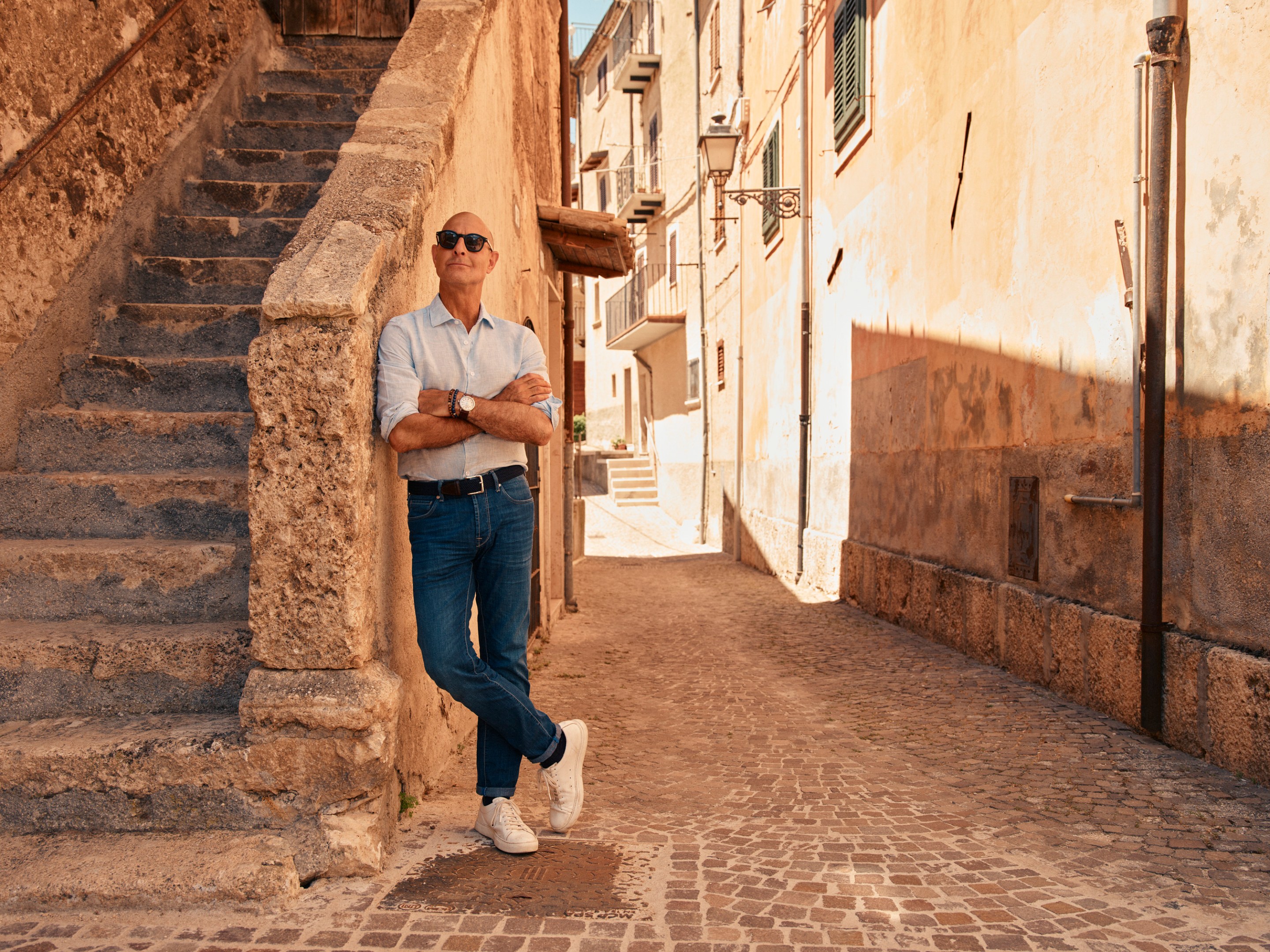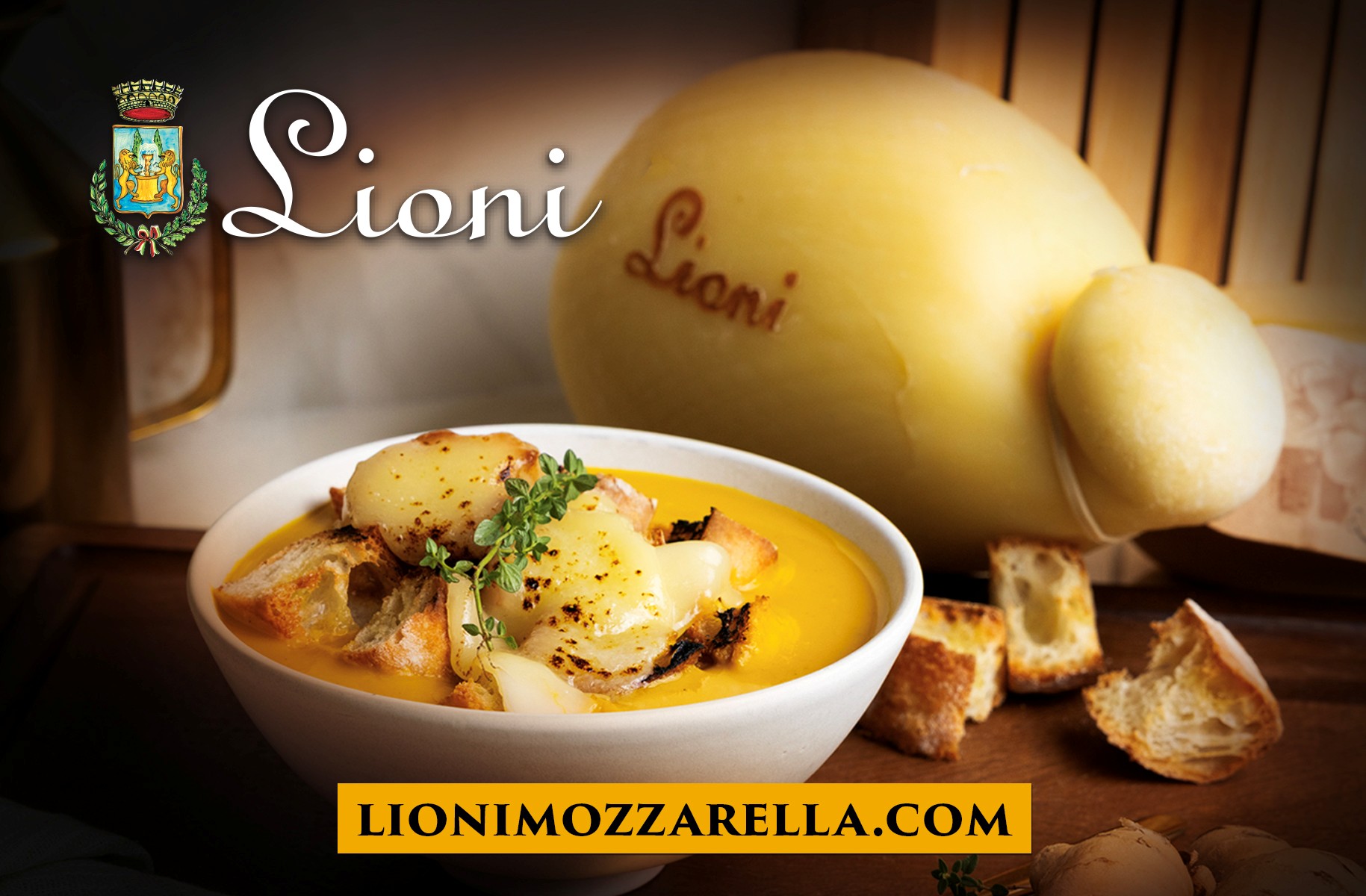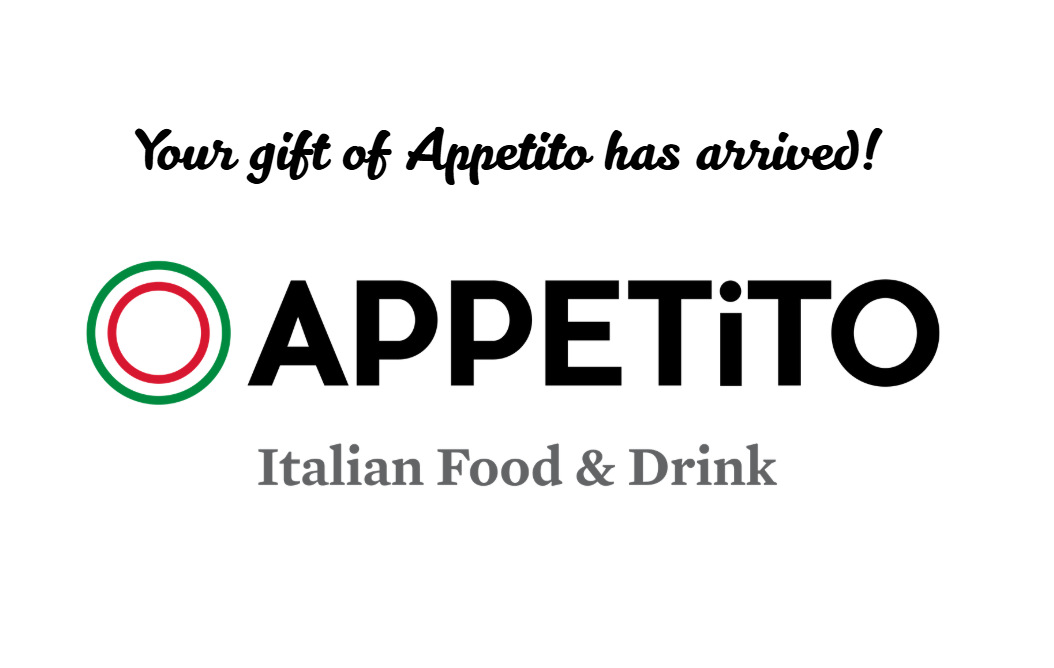Stanley Tucci steps into unknown territory in Abruzzo, a region he’s never visited. Rugged, mountainous, and shaped by centuries of isolation, Abruzzo is often called “Little Tibet” for its dramatic peaks and sense of distance from the rest of the country. Separated by the Apennines and bordered by the Adriatic, Abruzzo is the least densely populated region in Italy. Tucci is here to understand how such a raw and unforgiving landscape has shaped its food and its people.
Senarica: Where Time Stands Still
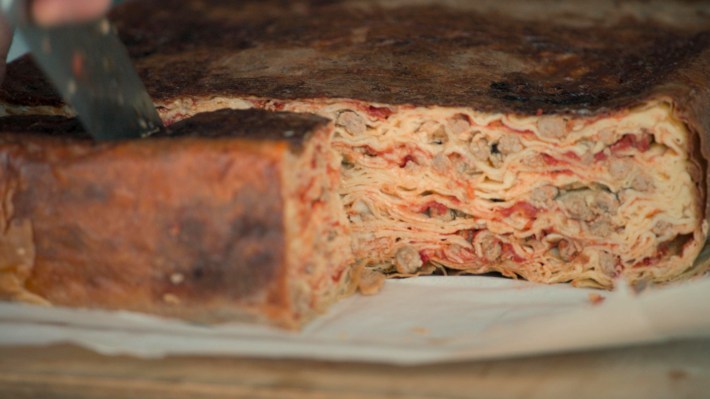
In a remote village called Senarica, Chef Danilo Cortellini welcomes Tucci to lunch with his family. Though Cortellini spent over a decade as head chef at the Italian Embassy in London, it’s his mother Lucia who runs the kitchen. The centerpiece of the meal is timballo, a multi-layered baked dish built with crespelle, which are thin, crepe-like sheets made with olive oil and water. Tucci laughs as they credit Napoleon’s reign for the French influence but adds, “We don’t want to tell the French.”
Mini meatballs between layers of pork, egg, and cheese give the timballo a soufflé-like texture. The dish takes over two hours to prepare and rest. They eat it lasagna-style with Cortellini’s wife, daughter, and parents gathered around the table. When Tucci asks the chef’s father what life was like here as a child, he recalls a time when 300 to 400 people filled the village, long before cars arrived in 1964. Senarica was reachable only on foot, and its isolation preserved what Tucci calls “the purest form of Abruzzese cuisine.”
Gran Sasso: A Culinary Rite of Passage
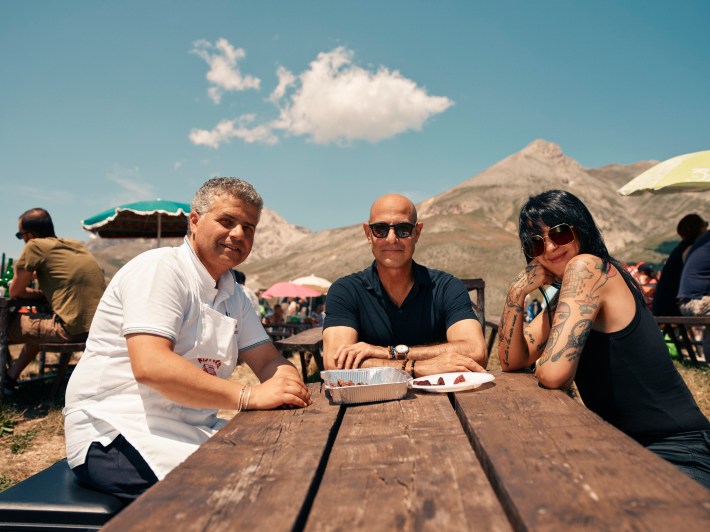
Traveling to the vast expanse near Gran Sasso, Italy’s highest peak in the Apennines, Tucci meets food journalist Cristina Bachetti and visits Ristoro Mucciante, a historic grill stop popular with bikers. It’s known for arrosticini, skewers of cubed mutton cooked over an open-air grill. Cristina calls it “a rite of passage.” Rodolfo Mucciante, the grill master, comes from a long line of shepherds. His grandfather built the original hut here, which once served as a set for the Western film They Call Me Trinity. The structure still stands today, now filled with the scent of grilled meat.

The dish is tied to the centuries-old practice of transumanza, the seasonal movement of sheep between Puglia and Abruzzo. In the 16th century, up to 70,000 sheep made the journey. As they grill together, Rodolfo and Cristina explain how arrosticini became the signature meal of the shepherd class - smoky, satisfying after a long journey, and meant to be eaten with your hands.
Villa San Sebastiano: Bread, Memory, and Community
At the southern edge of the region lies Villa San Sebastiano, a village rebuilt after a landslide in 1955 wiped out the original town. Here, baker Lucia Tellone is reviving the lost tradition of communal breadmaking, intentionally teaching the local children. The village oven sat unused for 35 years until she reopened it and brought back Saturday baking gatherings.
Using solina, a hardy mountain wheat grown by her uncle, she bakes rustic bread and pizzas. She sees this not just as food, but as a gift, and as something the younger generation can carry forward. “The bread oven feels as relevant now as ever,” Tucci reflects. “It provides warmth, nourishment, and community.”
Sulmona: Sweetness from the Silk Road

Sulmona, once a key stop along ancient trade routes between Asia and Rome, is known for something unexpected: confetti. These sugar-coated almonds were first made here in 1783 by the Pelino family. Now in its seventh generation, the candy shop is still family-run. Mario Pelino gives Tucci a tour of copper candy machines built by his grandfather.
Every almond is peeled, roasted, and selected by hand before being coated in sugar. Flavors range from cappuccino to cinnamon, and everything in-between. Marina Pelino, the family’s floral designer, assembles the iconic bouquets made entirely of these candies, crafting more than 200 a day. Used at celebrations across Italy and in Italian-American weddings, confetti feels like a surprising delicacy for a region known for its toughness.
Trabocchi Coast: A Feast from Desperation
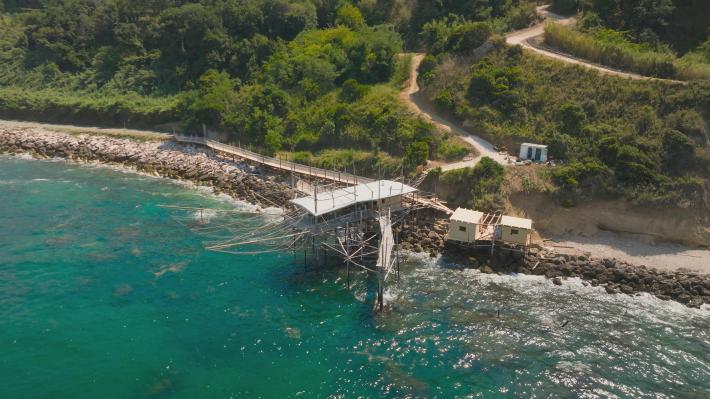
Along the jagged Adriatic coastline, Tucci arrives at the famed Trabocchi Coast. Here, wooden fishing platforms called trabocchi stretch over the sea, designed by farmers who didn’t know how to swim or understand the ocean. These platforms allowed desperate peasants to gather protein from the water without setting sail.
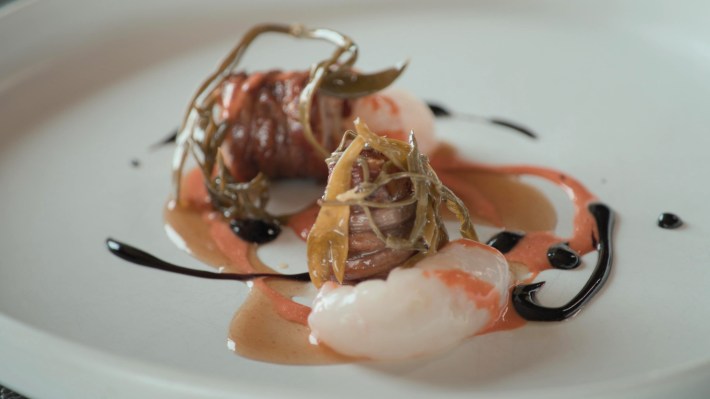
On one such platform, Chef Gianluca Di Bucchianico serves a meal inspired by this history at his restaurant, Gli Ostinati. His interpretation of torcinello is made with lamb offal and prawns. He also serves a bread soup with squid and orange tomatoes, and ends with spaghetti laced with sweet chili and lobster extract. Tucci calls the final dish “simple, but different,” and seems to understand the years it took for Gianluca to get here. As they sit in silence, overlooking the bright blue sea, it’s clear the chef’s dream has come to life. Tucci is touched by the grit of this region.
Castrovalva: Coming Home for Good

In the quiet hamlet of Castrovalva, Chef Davide Nanni prepares pecora al cotturo, a mutton stew once cooked by shepherds over an open fire. This was not just dinner, but a moment of emotion.
Onion, celery, and cuts of mutton go into a wide pot with rosemary, bay, and sage, then are doused in red wine homemade by Chef's father. It simmers for ninety minutes before it’s ready. “When you cook on the fire outside, it is always better,” Tucci says, watching the steam rise from the pot into the mountain air.
Davide speaks quickly, passionately, sharing stories of a town that suffered immensely from war, poverty, and time. He eventually left to find work elsewhere, but his grandfather's words stayed with him: “Remember, grandson, your America can be right here.” When he finally returned for good, he brought back not just his skills, but a belief that Abruzzo’s beauty and worth didn’t need to be found elsewhere.
Tucci listens, moved. There’s a quiet respect exchanged between the two men. One left to chase a dream and another returned to understand it. “This recipe is my history,” Chef Nanni tells him. “It’s how I remember my grandfather, who was everything to me.”
A Region Defined by Heart and Grit
As the episode comes to an end, Tucci doesn’t offer a recap. Instead, his reflections come through moments and shared meals, stories passed down, and the heaviness of emotion and history in every dish served. In Abruzzo, food is practical, sacred, and deeply personal. This episode showed a different side of Tucci, and he was obviously impressed by the resilience and determination of the people he met along the way.
Stay tuned for next week's recap of Tucci in Italy. Follow Tucci’s adventures at @StanleyTucci, @NatGeoTV, and @AppetitoMagazine.
